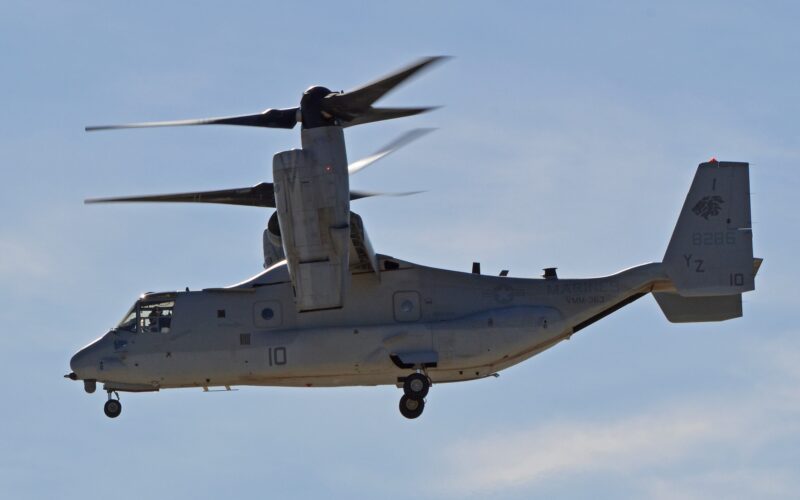On the afternoon of September 21, 2023, a US Marine Corps V-22 Osprey tiltrotor aircraft made an unexpected landing at Amami Airport (ASJ) in Amami Oshima, Japan.
While the reason for the unscheduled landing has not been disclosed, authorities have stated that there were no injuries reported, and there was no disruption of commercial flight operations as a result.
According to the Kagoshima Prefecture Port and Airport Division, the Osprey touched down at Amami Airport at approximately 3:46 p.m. local time. No prior notification had been submitted, catching both airport personnel and local authorities off guard, as reported by the Japanese public broadcaster NHK.
No injuries were reported in connection with the unexpected landing, and normal commercial flight operations at Amami Airport resumed promptly. However, the incident has raised concerns among residents, especially as this is by no means the first time an Osprey has made headlines in the region this month.
Indeed, Japan has witnessed a whole series of Osprey unplanned landings, with a total of three such incidents within a week. On September 14, 2023, two USMC Ospreys made a precautionary landing at Amami Airport and New Ishigaki due to a warning light being displayed during flight. There was a similar occurrence at Oita Airport (OIT) two days later.
AeroTime sent a request for comment to the US Marine Corps.
Is the Osprey still affected by a clutch issue?
The Osprey, officially known as the Bell Boeing V-22 Osprey, is a unique military aircraft that combines the capabilities of a helicopter and an airplane. It features tiltrotor technology, allowing its rotors to tilt vertically for takeoff and landing and horizontally for forward flight. The Osprey performs a wide range of missions, including troop transport, cargo delivery, search and rescue, and special operations. In addition to various branches of the US military, the Osprey is also utilized by Japan’s Ground Self-Defense Force.
The latest incident adds to existing concerns about the safety of Osprey aircraft, particularly given the recent history of mechanical issues.
On June 8, 2023, an MV-22 Osprey crashed while conducting training at Range-2512 IVO of Holtville, California. All five US service members on board lost their lives in the incident. The investigation revealed that the accident was a result of the pilots losing control due to an unintentional clutch disengagement, followed by a sudden, dual hard clutch engagement (HCE). This unexpected mechanical failure has prompted urgent action to replace relevant components before they reach a predetermined flight-hour threshold.
Another fatal V-22 Osprey crash occurred during an exercise in Northern Australia on August 27, 2023. The investigation into this is still ongoing.
Following the diversion of a V-22 Osprey to Amami on September 16, 2023, the USMC said that the recent series of mishaps did not appear to derive from the clutch issue.
“Currently, there are no indications that these events resulted from an MV-22 hard clutch engagement (HCE) malfunction,” Major Rob Martins, a spokesperson for the Okinawa-based 1st Marine Aircraft Wing, told Military.com in an emailed statement. “In each of these events, the aircraft sensors and monitoring systems performed as designed.”
On September 18, 2023, the USMC directed all its aviation units to conduct a two-day stand-down in flight operations following three Class-A aviation mishaps involving Marine aircraft over the past six weeks, namely the V-22 crash in Australia, the F/A-18D Hornet crash during a training flight in the vicinity of Marine Corps Air Station Miramar on August 24, 2023, and a USMC F-35B fighter jet crash in South Carolina after the pilot was forced to eject from the aircraft on September 17, 2023.

